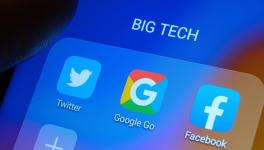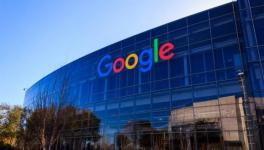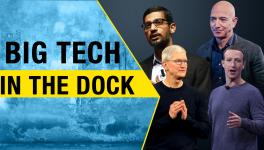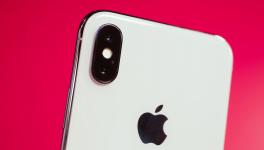Steve Jobs: The Architect
The entire mainstream media is paying tributes to Steve Jobs, so why does Newsclick need to pay one too? No, this article is not about Steve Jobs and how visionary he was and building Apple as the “most” valuable technology company. In any case, Bill Gates and Microsoft occupied the previous slot as the most valuable tech-company, so Apple's temporary elevation has very little to do with what is of value in technology but what the stock-market thinks of companies. Not the best way to look at technology.
In a market that has a huge number of me-too products – from phones to computers – what does Apple do which is different and how much was this Steve Jobs? After all, computers becoming personal or cell phones loaded with a whole lot of goodies that teenagers love, would have happened anyway. What is the distinctive Apple touch – read the Jobs touch – and why do Mac fans remind us of cult-like worshippers? What does Mac do that makes the bond between the woman/man and the machine so strong?
There are bound to be various explanations of this phenomenon. Some will talk about Jobs being a “visionary”; some will talk about Mac's (and other Apple devices) cosmetic appeal; others will talk about the intuitive feel of its user interface and so on. I think that among all these what stands out is Steve Jobs genius as an architect in the world of technology. He was not looking at each component of design so much as the over-all architecture that the product had to fulfil. And as an architect, he put the user at the centre of his design.
This aspect of design is somehow missed by most people dealing with technology – they tend to look at technology merely as a sum of its parts, not its grand design. This is even more so in a high-tech world – each machine is immediately broken down to its components and each component's revolutionary quality emphasised. What is missing in this account is a very simple question – what is the machine for and how will the person use it? Not how loaded it is with features of which any person will use at best only 10%, but how will she use this 10% that she does use?
This is where Mac has always stood out: this is what Steve Jobs' vision was all about. Jobs wanted to make the use of computers a pleasure not a pain as it was then. To him – and he was the first in realising this – software or computer use had to be intuitive; navigating technology had to be natural. If we needed a manual for the gizmo we are using, the vision of the designer is centred on the design and not the user. In the Mac world, everything is geared to the user.
Take two very simple issues. Whenever you plug a power cord into your laptop, you have to search for the “hole” in the laptop, and it can be in any position, quite often even behind the laptop making you become a contortionist. In Mac, it is conveniently located and also has a small magnet – you bring the power cord-end close to the socket and it satisfyingly plugs itself in. Take another simple Windows issue – how intuitive is it when we have to click the Start button to find the power off button? In all this, you have the feeling that whoever has designed the machine or the software interface, he or she does not really care about you, the user. For a Mac user, you have the feeling that they care – every bit of the design has been done with the user in mind. It is because you feel that they love you that you want to love them back.
This is what Jobs brought to Apple. In most cases, the technology he adopted was already there. The mouse and Graphic User Interface – using icons on the desktop and clicking on them to start an application, moving the cursor with the mouse – all this was technology discovered by others. Xerox had pioneered both but failed to see its potential. Mac adopted it and Microsoft adopted it from Apple – the cause of a famous row between Gates and Jobs. What Jobs showed was that it was not just adoption of such technologies that was driving his vision but the much greater whole. To others like Gates, these were just good individual ideas, what they lack is vision of the integrated whole that gave us the Apple experience.
One can go on about various features of Apple products. That is not relevant here. What was central to Jobs was his unswerving devotion to the best that technology could give as user comfort. On this he made no compromise.
At the end, what Jobs did would have probably come any way. Only those products would survive that understand users' needs. Today, nobody sells software with a large manual of how to use it. Those who do, do not survive too long. Siemens cell phones could never be used without a manual, no wonder Siemens does not make cell phones any more. As cell phones and computers become personal, they also become like fashion accessories. Who wants to lug around a clunky cell phone or an ugly laptop if the same is available in sleek designs? Who wants a cumbersome user interface if devices are available with intuitive ones, with eye catching, yet soothing screen colours? With touch screen to boot.
This is not to say Apple and Steve Jobs are the new saviours of the world. They are not. Their relationship to proprietary software and designs are deeply problematic. What Jobs did is to bring back to the electronic world what should be the basic tenet of engineering design – it is all about design and simplicity. It is all about people. In the heady rush of blazing cyber speeds, the technology too often overtook the products. Jobs put the human at the centre of technology and that is his unique contribution. Steve Jobs, RIP.
Get the latest reports & analysis with people's perspective on Protests, movements & deep analytical videos, discussions of the current affairs in your Telegram app. Subscribe to NewsClick's Telegram channel & get Real-Time updates on stories, as they get published on our website.
























